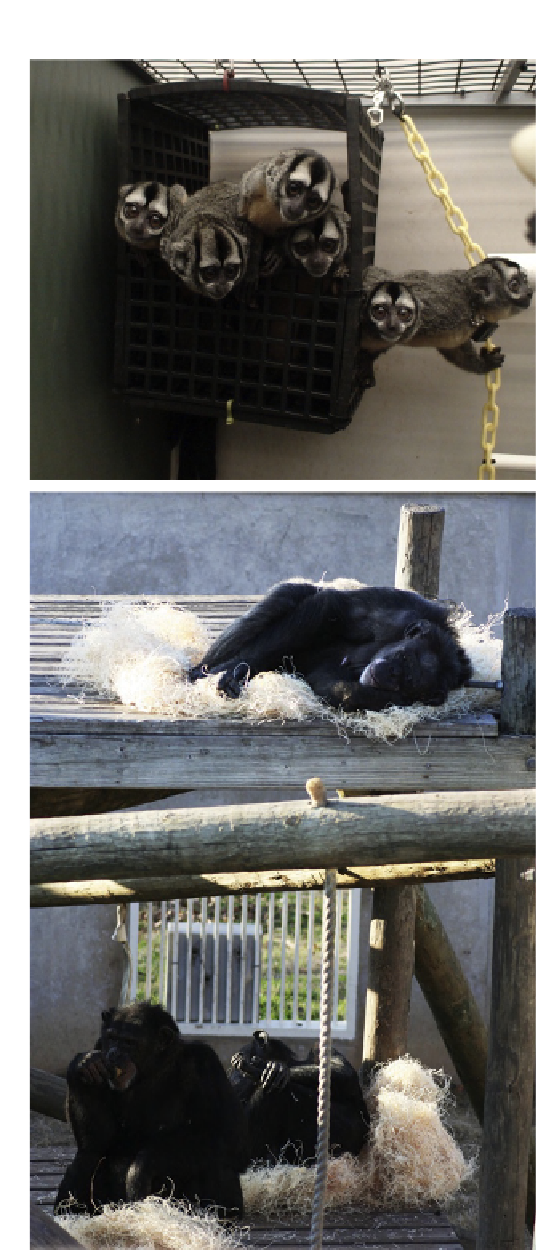Biomedical Engineering Reference
In-Depth Information
(
Rawlins et al., 2004
). However, the handling and animal
manipulations related to changing items too frequently
can be stressful for stress-sensitive or neophobic individ-
uals (
National Research Council, 2011
).
Certain physical enrichment items have been found to
provide some benefits to some individuals. Manipulable
items such as toys have been found to reduce certain
abnormal behaviors in some studies (
Kessel and Brent,
1998
), while other studies found no discernible effect of the
devices on abnormal behavior (
Line, 1991
) or found that
the benefit was limited to only those periods when the
apparatus was present (
Lutz and Novak, 2005
). NHPs may
show fairly rapid habituation to some types of physical
enrichment, but other types, such as destructible items, may
have longer-lasting effects (
Pruetz and Bloomsmith, 1992
).
Visual barriers can reduce aggression in group-housed
animals (
Reinhardt, 1991
), but in another study these
barriers were found to have the opposite effect when adult
female macaques were able to get out of sight of the adult
male (
Erwin et al., 1979
). Perches can also help to reduce
aggression in group-housed NHPs (
Nakamichi and Asa-
numa, 1998
), and flooring substrates, such as bedding or
grass, have reduced over-grooming behavior (
Beisner and
Isbell, 2008
).
The biggest drawbacks associated with the imple-
mentation of physical enrichment strategies are related to
safety; these strategies have the potential for increasing the
probability of injury or illness (see the section “Safety
Concerns” below). Physical enrichment can also lead to
increased trauma due to competitive aggression if only
limited quantities of enrichment opportunities are provided
to a group (
Honess and Marin, 2006
).
Habituation is another common drawback for many
types of physical enrichment. Items such as toys are often
used by the primates only for very short periods, typically
the few moments immediately following their presentation.
Items such as perches, nest boxes, and swings are less prone
to habituation than are toys (
Bayne et al., 1992
). Frequent
rotation of physical enhancements can maximize their
value while minimizing the probability that the subjects
will habituate to them. Concerns have also been expressed
that some physical enrichment items such as toys may act
as fomites, which could have unintended consequences for
research outcomes, particularly for studies of infectious
diseases (
Bayne et al., 1993b
). A final and quite important
drawback to the use of small, unattached physical enrich-
ment devices (like toys, bedding, and nesting materials) in
indoor rooms is that they can clog drains. Although most
facilities have Standard Operating Procedures that require
that items like toys and nesting materials NOT be washed
down the drain, in practice this occurs with problematic
regularity. Appropriate personnel training must be in place
to ensure that such human behavior does not put unneces-
sary restrictions on the provision of enrichment.
(A)
(B)
FIGURE 6.3
Nesting opportunities for (A) owl monkeys (
Aotus
nancymaae
) and (B) chimpanzees (
Pan troglodytes
). (Photos courtesy of
The University of Texas MD Anderson Cancer Center.)



